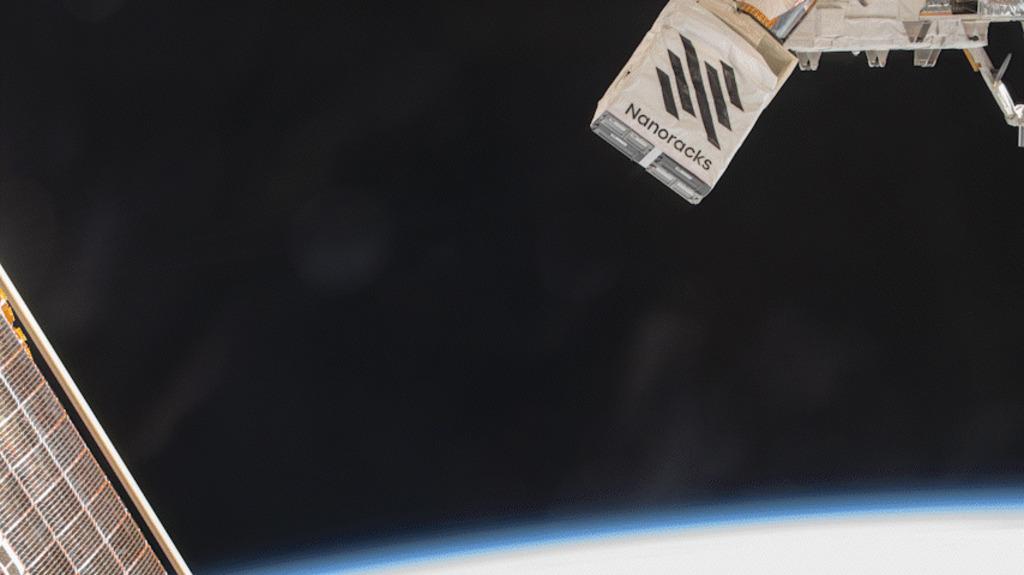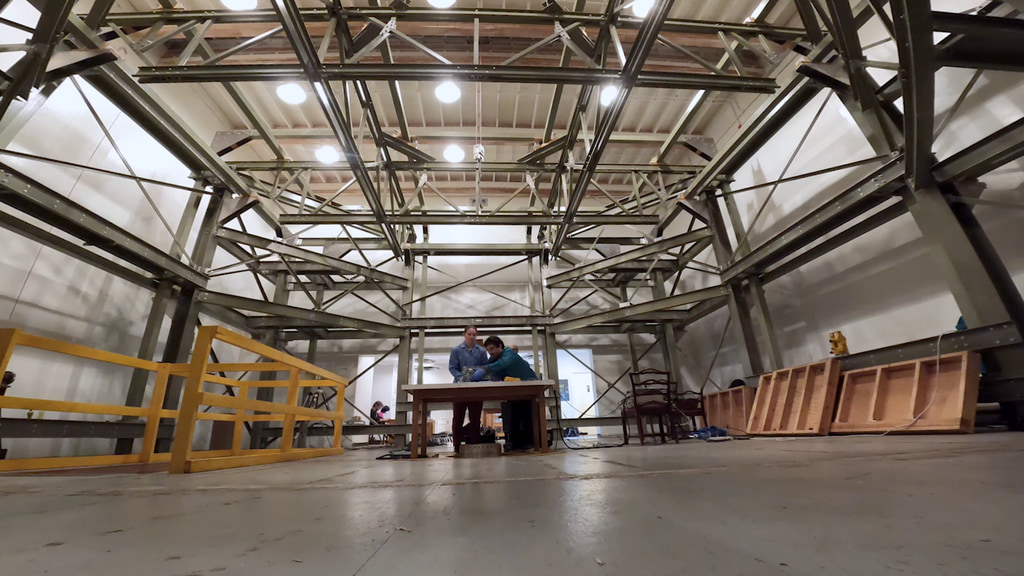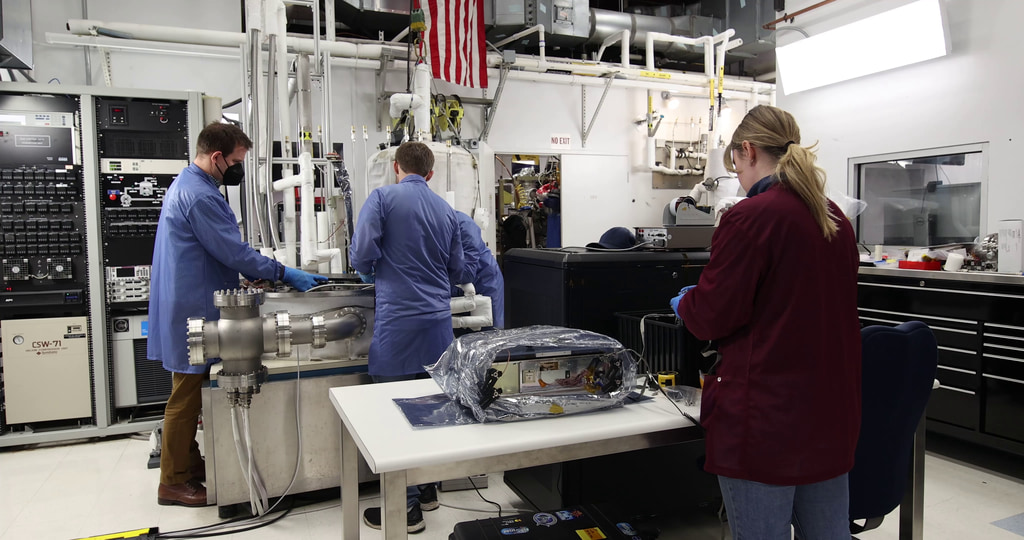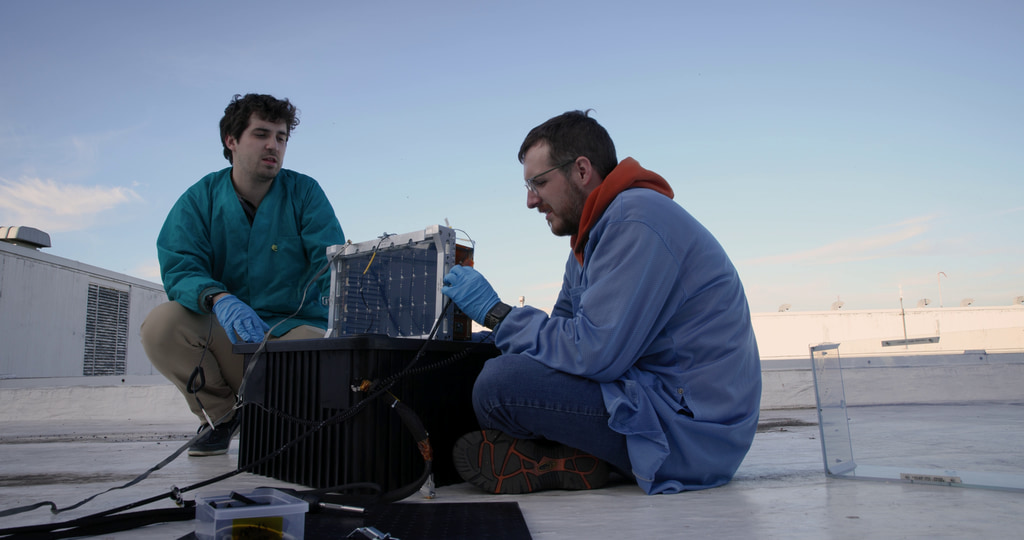BurstCube Gets Its Solar Panels
Engineers work on the BurstCube mission’s solar panels in this video. The first shot pans across the spacecraft as it rests on a table, panels unfolded. The second shot starts close to the spacecraft, then pulls back. The third shot shows NASA engineers Julie Cox and Kate Gasaway attaching one of the panels. The fourth shot shows one of the unattached panels sitting on a piece of foil on a blue tabletop. The fifth shot is a wider view of the unattached panel with Cox in view. The sixth and seventh shots show Cox and Gasaway attaching the second panel to the other side of the spacecraft, from the side and above, respectively. The final shot shows a test deployment of the solar panels.
Credit: NASA/Sophia Roberts
BurstCube is a mission developed at NASA’s Goddard Space Flight Center in Greenbelt, Maryland. The spacecraft is slated for takeoff in March 2024 from NASA’s Kennedy Space Center in Florida aboard a resupply mission to the International Space Station.
This CubeSat will detect short gamma-ray bursts, brief flashes of the highest-energy form of light. Dense stellar remnants called neutron stars create these bursts when they collide with other neutron stars or black holes. Short gamma-ray bursts, which last less than 2 seconds, are important sources for gravitational wave discoveries and multimessenger astronomy.
Once in orbit, it will be powered by twin solar panels. The images and video here show NASA engineers Julie Cox and Kate Gasaway installing the panels.

NASA engineers Julie Cox and Kate Gasaway install a solar panel on the BurstCube spacecraft in this image. The work was conducted in the CubeSat Lab at NASA’s Goddard Space Flight Center in Greenbelt, Maryland.
Credit: NASA/Sophia Roberts
Alt text: This photograph shows two women working on a small spacecraft.
Descriptive text: In this image, two women are hunched over a spacecraft sitting on a table enclosed on all sides except the one facing the camera. The sides of the enclosure are clear while the top has two dark gray panels with a light gray frame. The backside is also gray and reflects a strip of light from the room. The woman on the left wears a red long-sleeved jacket and blue gloves. She is connecting the spacecraft to a black panel with screws. The woman on the right wears gloves and a blue long-sleeved jacket. She is holding the panel in place.

The BurstCube satellite sits in its flight configuration in this photo. The shoebox-size spacecraft will launch aboard a resupply mission to the International Space Station, where it will be released into orbit and the solar panels on either side will deploy.
Credit: NASA/Sophia Roberts
Alt text: The BurstCube satellite sits on a table with its solar panels extended.
Descriptive text: This image shows a spacecraft on a table enclosed on all sides except the one facing the camera. The sides of the enclosure are clear while the top has two dark gray panels with a light gray frame. The backside is also gray and reflects a strip of light from the room. The spacecraft’s body is a vertical golden rectangle. Shiny black solar panels extend to either side and are much wider than the spacecraft itself. There are a few wires connected to the table, which are visible underneath it.

A wider view of the above.
Credit: NASA/Sophia Roberts
Alt text: The BurstCube satellite sits on a table with its solar panels extended.
Descriptive text: This image shows a spacecraft on a table enclosed on all sides except the one facing the camera. The sides of the enclosure are clear while the top has two dark gray panels with a light gray frame. The backside is also gray and reflects a strip of light from the room. The spacecraft’s body is a vertical golden rectangle. Shiny black solar panels extend to either side and are much wider than the spacecraft itself. There are a few wires connected to the table, which are visible underneath it.

NASA engineer Julie Cox attaches BurstCube’s solar panels in this photo. BurstCube was designed and built at NASA’s Goddard Space Flight Center in Greenbelt, Maryland.
Credit: NASA/Sophia Roberts
Alt text: This photograph shows a woman working on a satellite in a lab.
Descriptive text: In this image, a woman in a long-sleeved red jacket and blue gloves holds a screwdriver and works on a rectangular object, the BurstCube satellite, on a table. The table is enclosed on all sides except the one facing the camera. The sides of the enclosure are clear while the top has two dark gray panels with a light gray frame. The backside is also gray and reflects a strip of light from the room. The spacecraft is mounted vertically, with its narrow side facing out. The narrow side is made of a silver material, and the wider side looks black where a solar panel nestles against it.

NASA engineer Kate Gasaway shows off one of the BurstCube mission’s solar panels in this photograph.
Credit: NASA/Sophia Roberts
Alt text: This photograph shows a smiling woman working on small spacecraft.
Descriptive text: In this image, a smiling woman supports a black panel attached to a spacecraft. She’s wearing a long-sleeved blue jacket and blue gloves. The spacecraft is mounted to a black pegboard on a tabletop covered with a blue mat. The table is enclosed on all sides except the one facing the camera. The sides of the enclosure are clear while the top has two dark gray panels with a light gray frame. The backside is also gray and reflects a strip of light from the room. The front panel of the spacecraft is ajar, revealing the wires inside.
Credits
Please give credit for this item to:
NASA's Goddard Space Flight Center
-
Producer
- Sophia Roberts (Advocates in Manpower Management, Inc.)
-
Science writer
- Jeanette Kazmierczak (University of Maryland College Park)
Release date
This page was originally published on Monday, December 18, 2023.
This page was last updated on Monday, December 18, 2023 at 11:44 AM EST.





